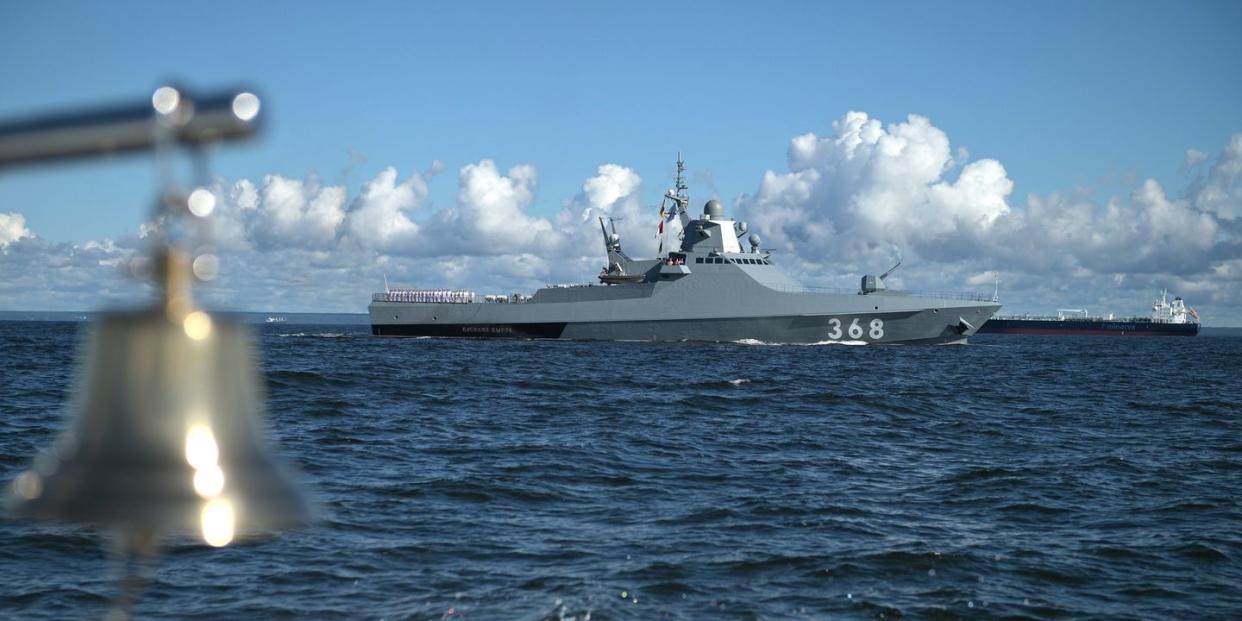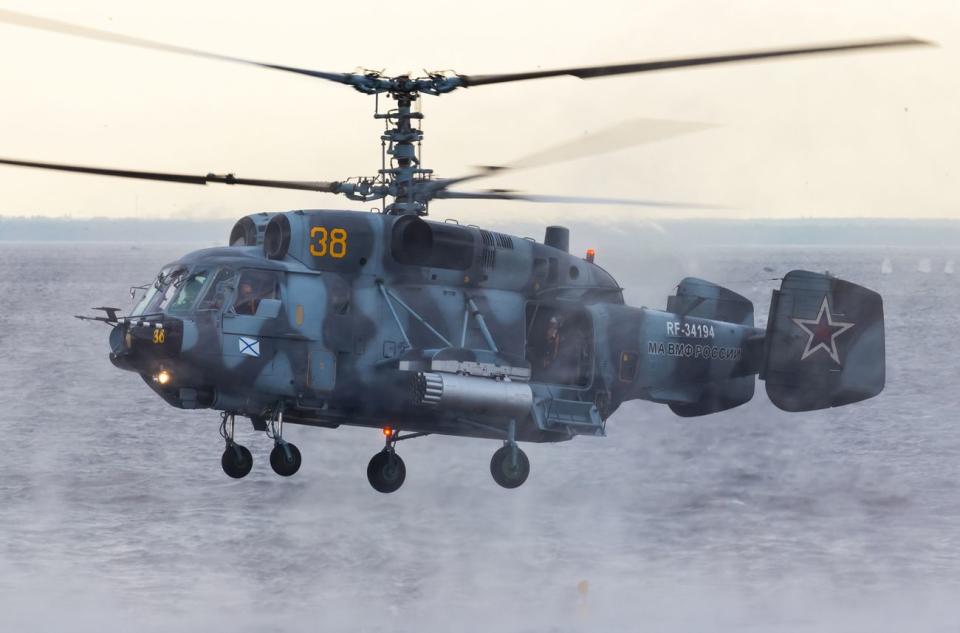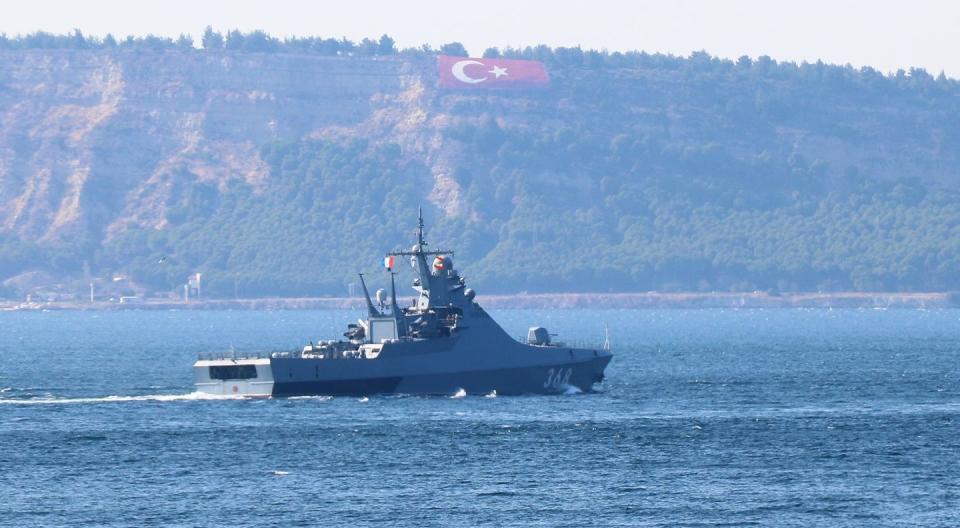Russia's Boats Fought a Deadly Battle With Ukraine's Robots. No One Knows Who Won.

Within 24 hours, Russia’s TASS state news agency reported two separate attacks by Ukrainian kamikaze drone boats on Russian vessels in the Black Sea.
The report alleged that early in the morning of August 1, Russian patrol boats Vasily Bykov and Sergey Kotov were escorting a civilian Russian vessel over 210 miles southwest of the Crimean port of Sevastopol when they came under attack from three Ukrainian drone boats (or USVs). Supposedly, fire from the “standard armament” of the Russian patrol boats destroyed the USVs before they could ram Russian ships with their explosive payload.
Then, on August 2, TASS claimed Ukrainian USVs attacked again the evening before, and were again defeated with direct fire from a “naval ship” in the southwestern Black Sea.
At least one of the civilian ships referred to appears to be container ship Sparta IV which, according to a March article for Naval News, had been seen ferrying over military supplies from the Russian military base in Tartus, Syria to Russian bases on the Black Sea, presumably for use in combat against Ukraine.
However, the same day, Ukraine released what they claimed were intercepted radio communications between Russian sailors and a Ka-29 helicopter suggesting that the August 1 attack had not gone as swimmingly as TASS claimed.
Genuinely interesting. This morning the Russian MoD claimed they destroyed 3 naval drones that tried to attack two of their Black Sea Fleet patrol ships (Sergey Kotov and Vasily Bykov). There were stories a container ship (Sparta-IV, reportedly carrying weapons coming from Syria)… pic.twitter.com/0fLXLfFRFM
— NOELREPORTS 🇪🇺 🇺🇦 (@NOELreports) August 1, 2023
In the audio, sailors appear to request medical evacuation by Ka-29 helicopters, and mention they have suffered six casualties: one dead and five wounded. Ka-29s then proceeded to carry these casualties to the Nakhimov Military School in Sevastopol.

If the audio is real, it seems to indicate either that at least one of the kamikaze boats made it to target, or if it was destroyed, was so close that its destruction caused substantial damage and casualties to the targeted vessel’s crew—as can happen with near misses.
Sparta IV’s owners are SC South LLC, a civilian company under Western sanction that serves Russian military contracts. Sister ship Sparta II was earlier found to be delivering S-300 missiles to Russia’s secondary Black Sea naval base of Novorossiysk—air defense weapons Russia, ironically, uses to bombard Ukrainian cities. Ukrainian media further alleges that Sparta IV has been armed with “large caliber” weapons and has armed military personnel onboard.
Repatriation of military equipment: @USTreasury sanctioned SC SOUTH LLC owned Russia flag vessel Sparta IV, itself sanctioned for being linked to SOUTH, transited Bosphorus toward BlackSea en route from Tartus to Novorossiysk carrying military cargo. Civilian vessel in name only. pic.twitter.com/QDy5q6ByOq
— Yörük Işık (@YorukIsik) March 5, 2023
Turkey does not permit Russian warships to pass back and forth between the Black Sea and Mediterranean via the Bosporus Strait, but does allow passage of civilian ships with military supplies.
Ukraine’s Lethal Robotic Jet Skis
Ukraine’s Navy lost all but one of its warships when Russia seized the Crimean Peninsula in 2014, and wasn’t able to deploy more by 2022, when Russia invaded on larger scale.
The service had instead invested in coastal anti-ship missile batteries, Bayraktar drones, and small patrol/gunboats. These eventually compelled Russia’s Navy to pull back from Ukraine’s coastline after Neptune missiles sank the Russian missile cruiser Moskva in April.
By fall, the Navy debuted its new offensive strategy: dispatching squadrons of custom-converted kamikaze motor boats loaded with explosives that were remote controlled via satellite antennas. An initial raid on October 29th on the Black Sea Fleet’s main base at Sevastopol inflicted substantial damage, reinforcing the tendency of Russia’s navy to ‘turtle up’ in Sevastopol's defended harbors.
While Ukrainian USVs continued to probe Sevastopol’s improving defenses with more limited success, Ukraine also began planning to harry Russian ships further out at sea.
Detecting, intercepting and attacking moving ships deep at sea poses significant new challenges compared to creeping up on a static naval base—or, say, the Kerch bridge (struck by Ukrainian USVs in July). That requires both pre-positioning the boats close to likely transit routes and maintaining the maritime surveillance capability to precisely locate Russian ships and plot an intercept. Ukraine first demonstrated capability to do this in an attack by three USVs on Russian spyship Ivan Khurs.
Russian Defense Ministry announced that Ukraine attempted to attack the Ivan Khurs signals intelligence ship of the Russian Navy with 3 unmanned surface vessels (USVs) in the Black Sea this morning.
Moscow released footage allegedly showing the destruction of one of the USVs. pic.twitter.com/YfS7xWSGWw— Status-6 (@Archer83Able) May 24, 2023
While Russia shared footage that showed the destruction of one of the boats by the Ivan Khurs’ four 14.5-millimeter KPVT close defense machine guns, subsequently released Ukrainian footage suggests at least one boat got close enough to have potentially caused damage.
Ca sent le trend sur la navalisation de systèmes de drone kamikaze
Looks like an ukrainian naval drone ("USV") managed to hit the Russian Navy intelligence ship "Ivan Khurs" https://t.co/bx6ayaL1c1 pic.twitter.com/9SW9fpMBzQ— Harry Boone (@Harry_Boone) May 25, 2023
The apparent casualties suffered by the escorting corvettes reinforces the danger Ukraine’s kamikaze boat fleet poses, despite the high attrition rate to defensive fire.
Photo-analysis by submarine expert H.I. Sutton has identified around a half-dozen distinct types of USVs developed by Ukraine. The first two types—which debuted in October of 2022—are apparently based on Canadian SeaDoo Jetskis and ride very low on the water.
In March, a new model appeared with a shorter but thicker boat-like hull. At the same time, a new fully-indigenous Magura V5 USV was identified in Ukrainian attacks from between March and July of 2023. This 18-foot USV has a 705-pound payload (which can include explosives or naval mines) and a range of 500 miles. It cruises at 25 miles per hour, but can surge to 48 mph when necessary. Besides attack capabilities, it’s also emphasized to have an intelligence-surveillance mission.
This July, Ukraine also debuted a USV version of the Kawasaki STX jet ski with much more limited modifications than previous designs, though with seats and control bars swapped out and long-range communication systems swapped in.
3/6
Based on the available video (see https://t.co/JnEMhUucIP) the jet ski is a Kawasaki STX. I am about 80% confident, but difficult to pin down the exact model or year in that imagery.
Note that the seat, handlebars and some casings appear to have been removed pic.twitter.com/uszwJEVX71— H I Sutton (@CovertShores) July 18, 2023
The Fortunes of the Vassily Bykov

Vassily Bykov is the lead vessel of six modern Project 22160 patrol boats (or corvettes) launched between 2017 and 2022 with hybrid diesel and gas-turbine propulsion. The Sergey Kotev is the fourth ship of this class and the last to have been commissioned in July of 2022. These lightly armored boats typically have a crew of 80, displace 1,800 tons fully loaded and are intended for escort missions, anti-sabotage patrols, and general offshore patrolling duties.
The main built-in armament comprises a fast-firing AK-176MA 76-millimeter anti-air and -surface gun (range 9.6 miles), with two additional 14.5-millimeter machineguns and DP-64 and DP-65 anti-saboteur grenade launchers for close defense. Additionally, the Bykov has test-mounted a modular payload system allowing for the launch of up to eight Kalbir-NK cruise missiles, or potentially the fitting of alternative weapons and equipment. The class also sports a helicopter hangar and landing deck, although that deck is now often seen occupied by a Tor-M2KM short-range air defense vehicle to provided needed protection from cruise missiles and drones.
The Bykov is notorious for participating in Russia’s war-opening bombardment and capture of Snake Island on February 23, 2022—alongside the now-sunk missile cruiser Moskva. In subsequent months, Ukrainian sources claimed Bykov had been destroyed several times. The vessel did reportedly appear to have been damaged when it returned to port in August, 2022.
The August drone boat attacks deep in the Black Sea reflects Ukraine’s growing ability to threaten even moving ships using a variety of expendable uncrewed boats. That may, in turn, compel Russia’s Navy to more systematically commit its corvette force to escort Russian shipping—at least, until a new Black Sea Grain Initiative agreement is reached.
You Might Also Like

